Sedunnic Armed Forces (Pacifica): Difference between revisions
(→Navy) |
No edit summary |
||
| Line 42: | Line 42: | ||
| deployed =5,000 | | deployed =5,000 | ||
<!-- Financial --> | <!-- Financial --> | ||
| amount =$ | | amount =$64.09 billion (2021) | ||
| percent_GDP =4. | | percent_GDP =4.2% of GDP (2021) | ||
<!-- Industrial --> | <!-- Industrial --> | ||
| domestic_suppliers =STT<br>Levē Kallnhē<br>Botna<br>SG<br>SLU<br>Sedtrē<br>ASA | | domestic_suppliers =STT<br>Levē Kallnhē<br>Botna<br>SG<br>SLU<br>Sedtrē<br>ASA | ||
Revision as of 18:54, 9 October 2022
| Sedunnic Armed Forces | |
|---|---|
| Rammstovd | |
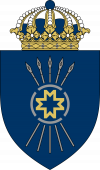 Coat of arms of the Sedunnic Armed Forces | |
| Motto | Aemm sufē saffuljā (Sedunnic: "Confident in our ability") |
| Founded | Antiquity |
| Current form | 2014 |
| Service branches | |
| Headquarters | Essela (peacetime) |
| Leadership | |
| Commander-in-Chief | Sedunnic Government |
| Minister of Defence | Derrns Kappsaty |
| Supreme Commander | General Maks Fejellienn |
| Manpower | |
| Military age | 18 |
| Conscription | 11-month service obligation |
| Active personnel | 116,500 |
| Reserve personnel | 222,000 |
| Deployed personnel | 5,000 |
| Expenditures | |
| Budget | $64.09 billion (2021) |
| Percent of GDP | 4.2% of GDP (2021) |
| Industry | |
| Domestic suppliers | STT Levē Kallnhē Botna SG SLU Sedtrē ASA |
| Foreign suppliers | Karnetvor Stoinia |
The Sedunnic Armed Forces (Sedunnic: Rammstovd, literally "the War Authority") is the government agency that forms the military of Sedunn. It has four service branches: Army, Navy, Air Force, and the so-called Teleresources branch.
Military service is mandatory in Sedunn for both men and women, but after several reforms in the 1980s, each year only a minority is conscripted for training after the mandatory entrance assessment tests. Serving abroad is always voluntary in peacetime. The active force is about 116,500 military and 57,100 civilian voluntary personnel. The reserve force is about 222,000 military personnel and has both conscripted and voluntary personnel. The voluntary personnel of the reserve force mainly serves in local defence battalions. The total personnel strength is about 404,000 people, including civilians.
Sedunn is a nuclear triad power with approximately 150 warheads that are delivered by plane launched-missiles, intercontinental ballistic missiles and submarine-launched cruise missiles.
Most of the equipment of the Sedunnic Armed Forces is manufactured domestically by state-owned companies. Military funding is by tradition high.
Mission and doctrine
The purpose of the Sedunnic Armed Forces is to prevent a foreign occupation of Sedunn and secure its continuing existence as an independent nation by defending the nation, its allies, and its interests in the world, and to assert the territorial integrity of Sedunn and the rule of international law. Furthermore, it shall keep the cross-Pacific trade routes open, support the civil society in case of natural disasters, and support international peacekeeping efforts.
The Sedunnic Armed Forces pursues a doctrine of high mobility, modularity, and often sophisticated equipment. The goal is to gain and maintain overwhelming local fire superiority by the means of combining arms. The ability is seen as a key component to achieve war deterrence. Especially the Navy is also used in access/area denial missions.
Following Tasternine's declaration of independence from the then nationalist Karnetvor in 2009 and Vimmru Innienn's new foreign policy where military neutrality was abolished, work has begun to increase expeditionary capabilities after decades of planning towards home defence. Sedunn has issued a guarantee of independence to Transsuneria and has generally reassumed a more active role internationally and militarily.
The Sedunnic Armed Forces also perform several ceremonial duties such as forming the Palace Guard and honorary guards during state visits.
Current international deployments
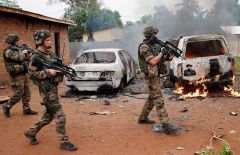
The Sedunnic Armed Forces also had peacekeeping troops deployed in Transsuneria since the end of the Second Transsunerian Civil War. The number of troops has recently been reduced to a battalion-sized permanent contingent which is tasked with aiding the Transsunerians maintain peace and to protect the Sedunnic naval support base in Floodport. According to current planning, a motorised battalion, a detachment of two to four Hotvemm G84 fighters and a small naval logistics support unit are deployed in the nation.
The Sedunnic government has stated that Sedunnic special forces are active in Denver since the Embassy Siege in Hawk.
The Navy conducts patrol missions on the cross-Pacific trade routes. Sedunn has small naval logistics support units in the allied nation Karnetvor.
Personnel
The Sedunnic Armed Forces are a mix of professional and conscripted personnel. In total almost 396,000 people serve in the Sedunnic Armed Forces, of which almost 57,100 are civilian full-time employees. There are four personnel categories: civilian, standing, volunteer reserve, and conscripted reserve. The three military categories mainly differ in peacetime readiness, the amount of training they receive, and sometimes also in capability and equipment. The 116,500-strong standing forces consist of full-time employees and has high readiness and capability. The volunteer reserve have high readiness but duties with less complexity. The conscripted reserve has moderate readiness but generally high capability.
The distribution of personnel between the services and categories is as follows:
| Service | Standing | Volunteer Reserve |
Conscripted Reserve |
Total |
|---|---|---|---|---|
| Army | 41,500 | 48,000 | 162,500 | 252,000 |
| Navy | 36,900 | - | 5,500 | 42,400 |
| Air Force | 33,500 | - | 5,000 | 38,500 |
| Teleresources | 4,600 | 800 | 400 | 5,800 |
| Total | 116,500 | 48,800 | 173,400 | 338,700 |
Additionally there is the grand reserve which is a list of all personnel that have once served in the Armed Forces but are either too old for the standing forces and the conscripted reserve, or those who have chosen not to enlist in volunteer forces, that could be called to serve again to replace heavy losses in a prolonged conflict. Several million people are listed.
In total, about 1.5% of the population is in the Armed Forces in some capacity, of which about half are voluntary personnel. About 18% of the military personnel are female.
Recruitment

Military (or civilian) service is compulsory from the age of 18 for all men and women (women since 2017). When turning 17, all Sedunnic citizens take entrance assessment tests (that may be postponed up to the age of 20 under special circumstances). Based on the results, different service alternatives are offered, of which one has choose one. The training is normally at minimum seven months. While many still are conscripted, the yearly number of conscripts has been greatly reduced since the 1980s, more due to modernisation requiring less personnel than an actual disarmament.
After having completed the training, the recruits are given a choice to continue serving in a professional career in one of the standing units, or join the reserve (the so-called mobilisation forces). Personnel that belongs to the reserve are required to participate in recurring refresher training and exercises. After having reached the upper military age, which varies depending on type of service, career personnel and reservists may volunteer to join the local defence forces.
Command structure
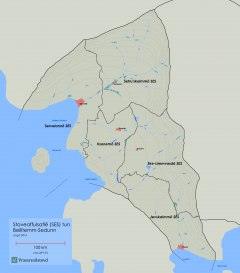
The highest ranking officer in the Sedunnic Armed Forces is the Supreme Commander, currently General Maks Fejellienn. The Supreme Commander is appointed by the Sedunnic Defence Ministry and leads the Armed Forces according to the policy set forth by the Government.
The Supreme Commander leads the Headquarters of the Armed forces, which consists of two staffs: the Operations Command, which plans, directs and controls the usage of the forces, and the Training Command which controls recruitment and training of the personnel in the forces. There are four service branches in the Sedunnic Armed Forces: the Army, the Navy, the Air Force, and the Teleresources. Each service branch has their own operations commands and regional training commands. The Special Forces, the Military Intelligence Service, the Military Materiel Agency and War Research Agency also belong to the Armed Forces and answer directly to the Headquarters.
Defence of the Sedunnic territory is coordinated with the six authority coordination regions where military and civilian efforts are combined under the concept of total defence.
Army
The Army (Trammtasstlē, "Field Forces") is responsible for land operations and is the largest service branch of the Sedunnic Armed Forces, having about 252,000 personnel. It is divided into three separate entities called corps: Maneuver Corps, Local Defence Corps and Expeditionary Corps, and two independent divisions: Mountain Division and City Division, that all have their own separate staffs. The Army fields 13 brigades, six regiments and circa 94 additional battalions of different types. The active (standing) force in the Army is about 41,500 troops, also including training personnel. Fully mobilised, the Army has the following combat structure.

The main units are:
- Maneuver brigade (x7): the combined arms core units of the Army, having a combination of mechanised manoeuvre, support and artillery battalions, designed for manoeuvre warfare. There are two variants: light and heavy. The heavy field brigade has twice as many tanks, double the amount of field artillery and more mechanised infantry, while the light field brigade is more mobile. These brigades all belong to the Maneuver Crops. Main systems include VN 14, VN 86E, AGvN 14, MHRN 14.
- Artillery regiment (x3): providing division-level fire support. The artillery is fully self-propelled and fields both guns and rocket pieces. The 3rd Artillery Regiment has strategic ballistic missiles with long range.
- Mountain brigade (x2): fights in mountainous regions. Mechanisation and access to fire support is much lower than in the field brigades. The main purpose is to deny an opponent access and passage through passes and valleys and surface surveillance.
- City brigade (x2): mechanised infantry brigades uniquely specialised in urban warfare. They also perform honour guard duties. The brigades use lighter armoured vehicles such as from the RN 90 family.
- Airmobile brigade (x1): uses helicopters to perform air assault with light and mobile infantry battalions.
- Airborne brigade (x1): has highly mobile parachute battalions.
- Local defence battalion (x80): are motorised and lightly mechanised rapid response units that guard and protect specific areas and buildings, and assist in the mobilisation of the rest of the army. They mainly inherit personnel and equipment from active and conscripted units. All these battalions belong to the Local Defence Corps.
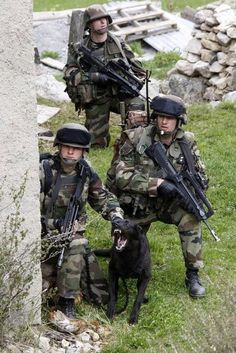
There are about 30 active battalion-size units in peacetime.
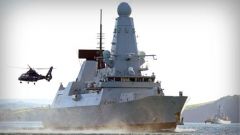
The Navy (Seiftasstlē, "Sailing Forces") composes five components: the Surface Forces, the Submarine Forces, the Marine Corps, the Coast Defence Forces, the Auxiliary Forces and the Naval Air Service. It includes in total about 36,900 active and 5,500 reserve personnel, 64 commissioned ships of various size, additional auxiliary ships, about 60 ASA Hotvemm aircraft and about 60 other aircraft, four coastal defence missile battalions and 7,000 marines. The Navy is classified as blue-water with some degree of amphibious and replenishment capabilities beyond its own home region. There are no fixed operational formations of combatant ships, instead temporary naval battle groups are formed for specific missions. The Sedunnic Coast Guard is not part of the Armed Forces and is a civilian component of the Sedunnic Police.
In Sedunnic, vessels are given the prefix "SSR", short for Sedunnō Seiftasstleō Riks ("Sedunn's Navy's Ship"). In Austral, the prefix "SNS" ("Sedunnic Navy Ship") is used instead.
Active ships
There are 62 ships in commission including 2 aircraft carriers, 6 destroyers, 8 frigates, 12 corvettes, 12 submarines, 3 amphibious warfare ships, 9 patrol boats, 10 mine countermeasures vessels and 15 miscellaneous auxiliary vessels. The total displacement of the Sedunnic Navy is approximately 390,000 tonnes.
There are four major naval bases in use, three in Mainland Sedunn and one in the Remetull Archipelago, and several smaller in Sedunn as well as in Transsuneria.
- Essela Base: Sometimes called the military capital of Sedunn, it is home to several Armed Forces commands, army, air force and naval units. Aircraft carriers, destroyers, submarines and much of the transport vessels are based there, as well as the Marine Corps and larger auxiliary vessels. It is located 15 km north-west of the capital of Sedunn, Grovne.
- Ullenst Base: It maintains the Navy's frigates and some of the corvettes. Sedunn's largest shipyard is located in Ullenst.
- Flered Base: It supports all operations in the Mediterranean Sea. Currently the most important surface combatants stationed there are corvettes. Flered is the second largest port city in Sedunn after Grovne.
- Gafsred Base: It supports all operations in the South Pacific Ocean. Gafsred and neighbouring Tarvem have among the largest ports of the islands in the ocean.
Air Force
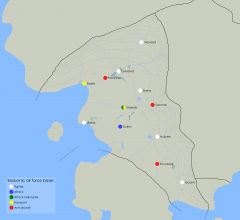
The Air Force (Lytretasstlē, "Air Forces") is the aerial warfare branch of the Sedunnic Armed Forces. It has a strength of about 33,500 active and 5,000 reserve personnel. It includes 277 ASA VOT 14 Hotvemm multirole fighter aircraft in 11 squadrons, five long-range air defence battalions, two attack helicopter squadrons and transport aircraft.
The Air Force has 13 main bases. After mobilisation many of the squadrons disperse to temporary bases as a measure against nuclear weapons and preemptive airstrikes. The reserve belonging to the Air Force mainly form base protection battalions and other support personnel.
Current aircraft inventory
Teleresources
The Teleresources (Jokala'lē) is a branch that is responsible for the cyber and electronic warfare and intelligence, and the space resources such as satellites. It has an active personnel strength of about 4,600 and a reserve of 1,200. The Teleresources is the youngest branch, founded in 2011.
Special forces
The Special Operations Troops (Leynlē Uttsȳ Lekserris) use unconventional means to conduct special operations. The number of troops is secret, but is often estimated to around 800. There are four different services within the force:
- Ensi Uttsȳ Rakra'is (EUR) - Special Combat Service: Engages and destroys targets of great significance to the enemy, rescues people captured by the enemy or held hostage.
- Ensi Uttsȳ Lynyvis (EUL) - Special Reconnaissance Service: Gathers intelligence on activities, certain individuals, or anything of strategic importance.
- Ensi Uttsȳ Hemmvevasis (EUH) - Special Electronic Warfare Service: EM compatibility and deception; electronic masking, probing, reconnaissance, and intelligence.
- Ensi Uttsȳ LTUS-Lekserris (EULTUSL) - Special CBRN Operations Service: Its tasks range from CBRN-specialised intelligence gathering, combat in contaminated environments, disarmament of CBRN weapons and critical containment of C-, B-, and R-events.
Nuclear weapons
The Sedunnic Armed Forces has a nuclear arsenal of approximately 150 warheads spread out in three different delivery systems forming a nuclear triad of plane launched-missiles, intercontinental ballistic missiles and submarine-launched cruise missiles. The Air Force's VOT 14 D strike craft can be equipped with plane launched-missiles. The intercontinental ballistic missiles have an estimated range of more than 5,000 km.
Sedunn has been a nuclear power since the completion of the Case Yellow Fox program in 1957, in which Sedunn and Ryccia jointly designed and tested an atomic bomb intended to be deployed against the Imperialists in the Great War. Sedunn has signed but not ratified the WF Treaty on the prohibition of nuclear weapons proclaiming its intent to disarm, should every other nation do so simultaneously[1].
Expeditionary forces
While most of the the Sedunnic Armed Forces technically can operate abroad, and have done so historically, there are high readiness units especially equipped and trained to deploy at very short notice to places far away. These form the operational expeditionary forces, which during peacetime include the 1st Airmobile Brigade, the 1st Parachute Brigade, the 1st Marine Regiment and the special forces. The total strength is about 9,000 troops.
Equipment and suppliers
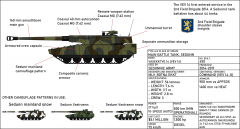
Most of the military equipment used by the Sedunnic Armed Forces is manufactured in Sedunn. An organisation called Military Materiel Agency in Austral, organised under the Training Command, is responsible for research, preliminary testing and procurement of military hardware. Selling military equipment to other nations is strictly regulated by law (Law 1022-1912) and is normally only reserved to closely allied nations. However, Sedunn has been known to support rebellions and foreign powers with weapons when it has served a very specific purpose.
Major manufacturers of military hardware include the following.
- STT: surface combat ships.
- Levē Kallnhē: surface combat ships (traditionally), submarines, and other marine vessels.
- Botna: armoured and tracked vehicles.
- SG: cannons and missiles.
- SLU: electronic equipment, including radars.
- Sedtrē: firearms.
- ASA: aircraft.
- Orta: AUVs
Many other major Sedunnic companies are involved in delivering products not directly intended for combat, like the car manufacturers HF KJ, Limma KJ, aircraft manufacturer Levea and food manufacturer Inniennō Jul. Notable equipment include the Suvvtrefy 03 D assault rifle, VEV 14 main battle tank and the ASA VOT 14 Hotvemm multirole fighter.
Uniforms
The Sedunnic Armed Forces has three classes of uniform: combat dress, office dress, and parade dress.
Combat dress
There are two combat dresses in use. The field combat dress is manly used by the army but is also used by land warfare units of the air force and the navy. Five versions of the field combat dress exist with different camouflage colours for different climates. The sea combat dress is used by the navy.
| Field combat dresses | Sea combat dress | ||||
|---|---|---|---|---|---|
| Summer | Winter | Urban | Desert | Jungle | Sea |
 |
 |
 |
 |
 |

|
Note that the beret is normally used for garrison duty and more ceremonial occasions. The field cap is otherwise used.
Office dress
The office dress has similar use to the more internationally established term service uniform. The uniform is mainly used for ceremonial occasions and staff service, but also off-post activity. Each branch except Teleresources has its own dress.
| Office dresses | ||
|---|---|---|
| Army | Navy | Air Force |
 |
 |

|
The colour of the buttons and rank insignia, the beret patch and other details may differ from unit to unit. The Army office uniform is made to resemble the old K. 1880 field uniform.
Parade dress
The parade dress is for parades and ceremonial duties. The parade dress can be either an older uniform, such as the K. 1880 (retro), or the combat dress or the office dress with extra parade attire, such as the K. 1880 hat and white gaiters and gloves. A belt is normally included.
| Parade dresses | |||
|---|---|---|---|
| Army (modern) | Army (retro) | Navy | Air Force |
 |
 |
 |

|
Note that personnel in the navy and air force below OR 6 do not wear the parade hat, but a beret or equivalent.
Ranks and insignia
Symbols
Personnel, vehicles (both ground and air) and equipment of the Sedunnic Armed Forces are recognised by either the Sedunnic flag as a patch or painted, or by the Star of Limmvasd roundel painted or engraved. Military installations and buildings fly the Sedunnic flag, sometimes with a yellow pennant to set them apart from civilian counterparts.
-
Roundel of the Sedunnic Armed Forces.
-
Low-visibility version of the roundel of the Sedunnic Armed Forces.

